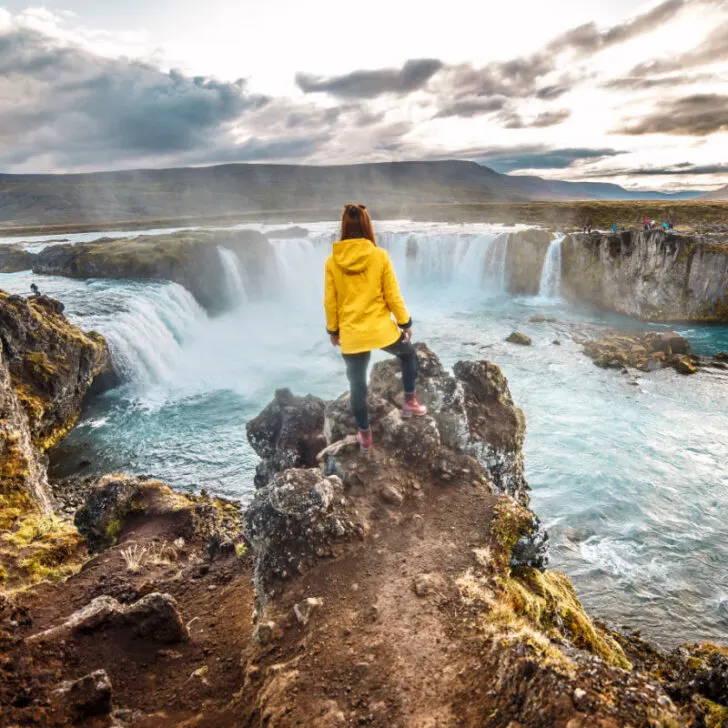Iceland is a bucket list destination that has seen an increase in tourism recently, and although most people go in the summer, it is actually right now, in the months of October and November that is the best time for a visit to this epic country.
October and November are the best months to see the Northern Lights in Iceland when the weather is cold but not nearly as cold as it’s going to get in the later months.
It is also a great time because crowds are smaller and prices are lower, meaning it’s easy to book tours and accommodation.
Flight deals can be found, and getting to Iceland from both the U.K. and the U.S. can be cheap and easy.
@seasonyourtravel October is the perfect time to go there as there as way less people, but you get to also see the northen lights 🥹 #iceland #auroraborealis #northernlight #travel #october #bucketlist #topdestination
Here’s Why Right Now Is The Best Time To Visit Iceland:
1. Ideal Weather
Iceland has been seeing a record number of tourists recently, especially in the summer season. But many don’t know that right now in the months of October and November, the country is stunning and the days can be filled with sunshine and some mild weather.
October could be considered to be the wettest month, although it’s usually just a constant drizzle, making the moody atmosphere even more magical. October average temperatures fall around 37 – 45 degrees, so bundling up is necessary, but remember to dress in layers, and this island usually sees multiple seasons in one day.
November weather can be characterized as cold, dark, and wet, which could put any traveler off the idea for sure. But actually, many seasoned travelers will tell you that this is not a bad time to visit, as you just have to layer more and plan ahead, and you can experience some epic landscapes nearly crowd-free.
@asasteinars
2. Fewer Crowds
As mentioned, Iceland has been trending with travelers recently, and therefore record crowds are taking a trip to this epic island. It’s been considered to be one of the safest and favorite for solo travelers, and of course, it can see some crowds at the more famous attractions.
In the late fall months of October and November, the majority of the visitors have gone home, and the winter adventure seekers have not arrived yet, meaning you have more room at the famous waterfalls, glaciers, black beaches, and lagoons to yourself.

3. Lower Prices
Iceland’s high season is the summer, and of course, a visit at this time will result in some pretty steep prices. Let’s be honest: Iceland is known around the world as being a very expensive destination in general, and this holds true all year.
Despite high prices across the board, the later fall months are a great time to go if you are trying to save some money. Car rentals, accommodations, tours, and other major expenses are known to have lower prices at this time, not to mention great flight deals that can be found from both the U.S. and the UK.
@trip.com Send this to your best friends and remind them to visit Iceland in November ❄️Cr: @aureliestory@tylerwayneglass IG@dannytaze@wetravelmiles #traveltiktk #iceland #fyp #bucketlist
4. Natural Beauty
Iceland is a stunning destination in any weather, and the summer, winter, fall, and spring all allow visitors to take in the natural view as they evolve through the seasons.
The months of October and November offer a chance to see the rugged and diverse landscape in a new light, with famous sites such as the waterfalls of Dettifoss and Godafoss with their frosty water rushing over.
The black sand beaches seem to take on a new life as the freezing waters crash against the shore, and snow-capped mountains and glittery glaciers overtake the landscape as the weather gets colder.

5. Loads Of Activities
A visit to Iceland is all about the tours, and a visit in October (and into the start of November) means you can take advantage of both the summer and winter offerings.
The days are still filled with enough light hours that you can enjoy many of the famous sightseeing opportunities, and the evenings are dark enough to start spotting the Northern Lights.
Glacier tours, horseback riding, winter sports, and lagoon lounging are all popular at this time of year, not to mention it is prime time for whale watching as they are migrating at this time of year.
Remember that self-driving in these months can be a bit unpredictable, as the cold rain and fog can make road conditions difficult, so make sure to plan ahead for this.

6. Spotting The Aurora
Iceland is known to be one of the most famous places in the world for catching the Northern Lights, and the months of October and November offer a great time to do it.
It’s not nearly as cold and busy as it will get later in the winter, meaning tours and locations will not be as crowded, and the weather is cold but not unbearable like it will get soon.
The clouds at this time of year tend to be less dense than they are in the winter months, offering a clear sky and a great viewing experience. Don’t forget to check out an Aurora forecast before heading out to avoid any disappointment.

Credit: Source link

